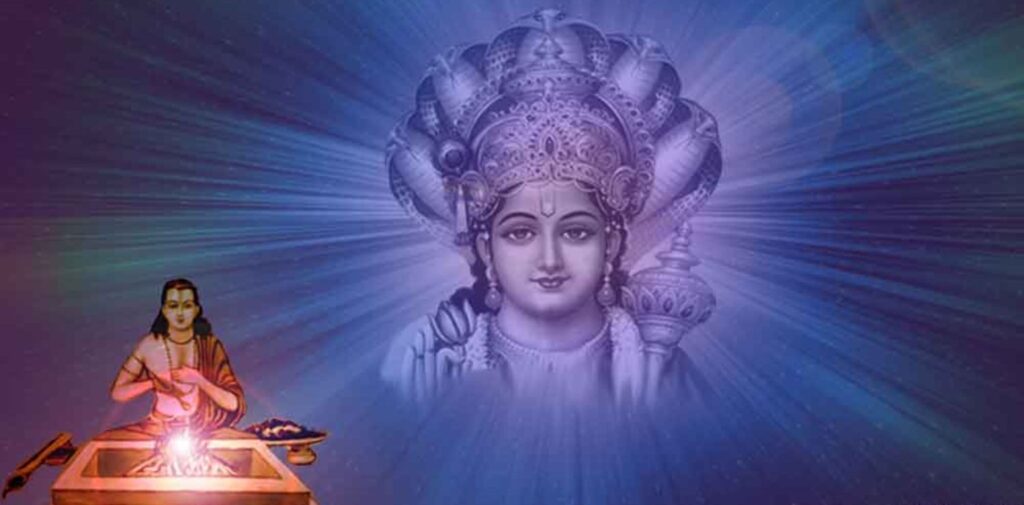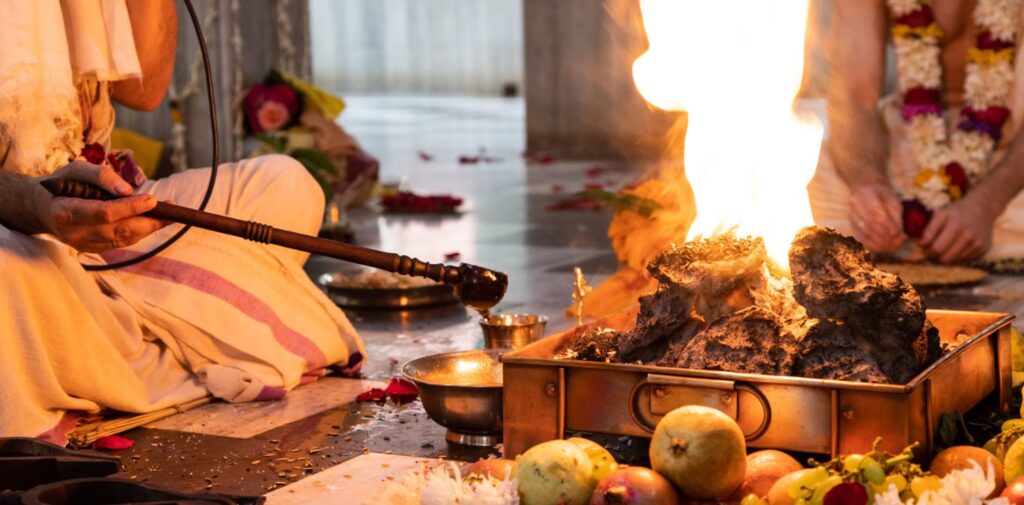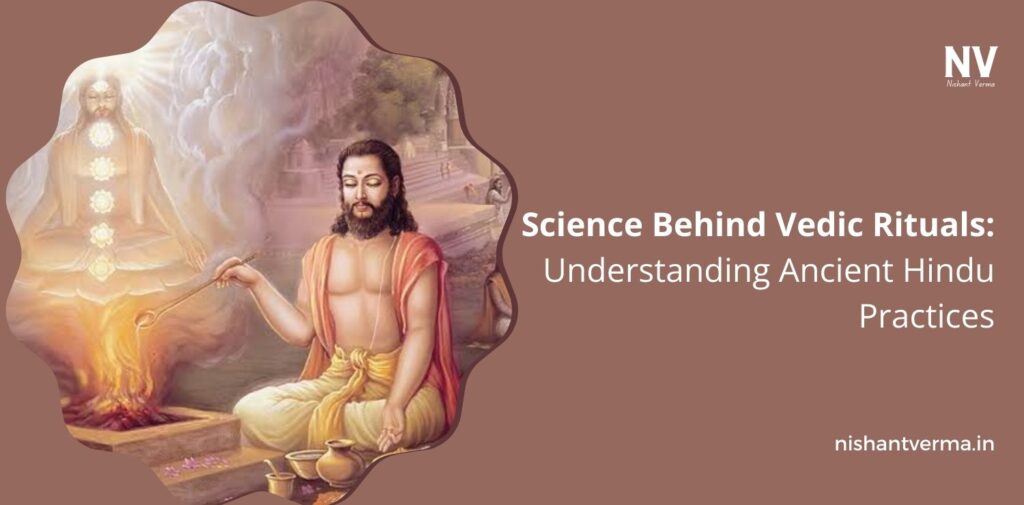The Vedic rituals, practised for thousands of years in India, are much more than just religious ceremonies. They are deeply rooted in ancient wisdom and are believed to be linked with the science of the universe, health, and harmony. These rituals, which originated from the Vedas (the ancient Hindu scriptures), combine the physical, mental, and spiritual aspects of life. Many people today view these rituals as symbolic or traditional, but there is a growing understanding of their practical and scientific significance. In this article, we’ll take a closer look at the science behind Vedic rituals and explore how they work in unison with nature, the mind, and the body.
What Are Vedic Rituals?
Vedic rituals are religious and spiritual ceremonies based on the Vedas, which are the oldest sacred texts in Hinduism. These texts were composed in Sanskrit over 3,000 years ago. The rituals include prayers, mantras (sacred chants), fire offerings (havan), meditation, and other acts of devotion. They are designed to invoke blessings from deities, purify the environment, and bring about positive changes in the lives of individuals and society.
While these rituals are spiritual, they also have practical applications that can promote physical and mental well-being. The Vedas contain a wealth of knowledge that touches upon everything from astronomy and mathematics to psychology and health. Let’s explore how Vedic rituals are connected to science and their significance in our modern world.

The Role of Sound in Vedic Rituals
One of the most important aspects of Vedic rituals is the use of sound, particularly mantras. Mantras are sacred syllables or phrases chanted repeatedly to invoke divine energy and create vibrations that affect the mind, body, and environment.
Scientifically, sound has a profound impact on our brain and nervous system. The rhythmic chanting of mantras can calm the mind, reduce stress, and help in achieving a state of deep meditation. The vibrations produced by chanting are said to resonate with specific frequencies that can promote healing and balance in the body. For example, the famous “Om” mantra is believed to represent the sound of the universe itself, helping to synchronize the practitioner with the cosmic energy.
Researchers have also found that chanting mantras can stimulate the parasympathetic nervous system, which is responsible for relaxation and recovery. This makes it easier for individuals to enter a meditative state, which can lead to reduced anxiety, lower blood pressure, and improved overall mental health.

Fire Rituals: The Science of Havan
A key feature of many Vedic rituals is the “havan” or fire sacrifice, where offerings such as ghee (clarified butter), grains, and herbs are offered into a sacred fire while chanting mantras. The fire is considered a mediator between the human and divine realms. But there’s more to this practice than meets the eye.
The act of offering substances into the fire creates a chemical reaction that releases various gases, including carbon dioxide, water vapour, and even trace amounts of oxygen. These gases are believed to purify the surrounding air and make it more conducive to positive energy.
From a scientific standpoint, the burning of certain herbs and substances can release beneficial compounds that purify the air. For example, the smoke produced by burning herbs like camphor or frankincense is known to have antibacterial properties, which can help cleanse the environment. The heat and smoke from the fire also create negative ions in the air, which are known to improve mood and reduce stress. Negative ions are naturally found in environments like forests and beaches, and they are thought to boost serotonin levels in the brain, improving mental clarity and happiness.
The Importance of Timings: The Science of Muhurta
In Vedic rituals, the timing of ceremonies is extremely important. Specific rituals are often performed at particular times of the day or during auspicious moments known as “muhurta.” The concept of muhurtas is based on the position of celestial bodies—planets, stars, and the moon. According to Vedic astrology, these positions influence human behaviour and energy patterns.
The idea is that performing rituals at certain times when cosmic energies are favourable can enhance the positive effects of the ritual. For example, sunrise and sunset are considered particularly powerful times for spiritual practices. Scientifically, this can be understood in terms of the body’s circadian rhythm—the natural internal clock that regulates sleep-wake cycles. The body’s biological functions are influenced by natural light, and conducting rituals during these times may help synchronize the mind and body with the natural world.
Ayurveda and Vedic Rituals: A Holistic Approach to Health
Vedic rituals are closely intertwined with Ayurveda, the ancient system of medicine that emphasizes balance in the body and mind. Ayurveda is based on the concept of three doshas (Vata, Pitta, and Kapha), which represent the fundamental energies that govern our physical and mental states. Vedic rituals, including dietary practices, lifestyle choices, and spiritual activities, are designed to keep these energies in balance.
Many Vedic rituals involve offerings of food and other substances that are believed to have healing properties. For instance, ghee, a key ingredient in many rituals, is considered a source of vitality and longevity in Ayurveda. It is believed to balance the body’s internal heat and coolness and aid in digestion. Similarly, other offerings like herbs, honey, and milk are believed to promote overall health.
From a modern scientific perspective, Ayurveda has found support in many areas of health, including stress reduction, immune system strengthening, and digestive health. While some of the practices in Ayurveda and Vedic rituals may seem mystical, many of them align with the principles of modern holistic health.

Meditation and Mental Clarity
Meditation is an integral part of many Vedic rituals. The practice of meditation involves focusing the mind, calming mentaal chatter, and achieving a state of deep awareness. This is often done by concentrating on a particular mantra or through visualization.
The benefits of meditation have been widely studied by modern science. Research has shown that regular meditation can change the structure of the brain, increase the production of “feel-good” hormones like serotonin, and improve focus and concentration. Meditation has also been linked to lower levels of stress, anxiety, and depression, and it enhances emotional well-being.
In Vedic rituals, meditation helps in connecting with the divine and also brings about personal transformation. The act of stilling the mind is seen as a way to transcend the ego and achieve higher states of consciousness, which is believed to lead to inner peace and spiritual growth.
Conclusion: Connecting Ancient Wisdom with Modern Science
The science behind Vedic rituals is far-reaching and encompasses a wide range of disciplines, from psychology and medicine to environmental science and astronomy. While these rituals may have originated in ancient times, they continue to resonate with people around the world today because they promote balance, well-being, and spiritual growth.
Whether through the use of sound, the healing properties of fire, or the alignment with cosmic rhythms, Vedic rituals are not just ceremonial—they represent a holistic approach to life, blending physical, mental, and spiritual health. Understanding the science behind these practices can help us appreciate the depth and wisdom of ancient Hindu traditions while also showing us how these rituals can positively impact our lives in the modern world.
In a fast-paced, stress-filled world, Vedic rituals offer a reminder that there is more to life than just material pursuits. They encourage us to slow down, connect with the environment, and find peace within ourselves. As science continues to explore the potential benefits of these ancient practices, it’s clear that the wisdom of the Vedas is as relevant today as it was thousands of years ago.




